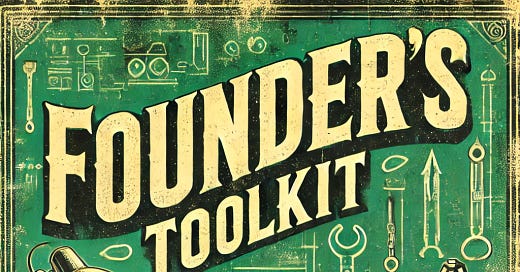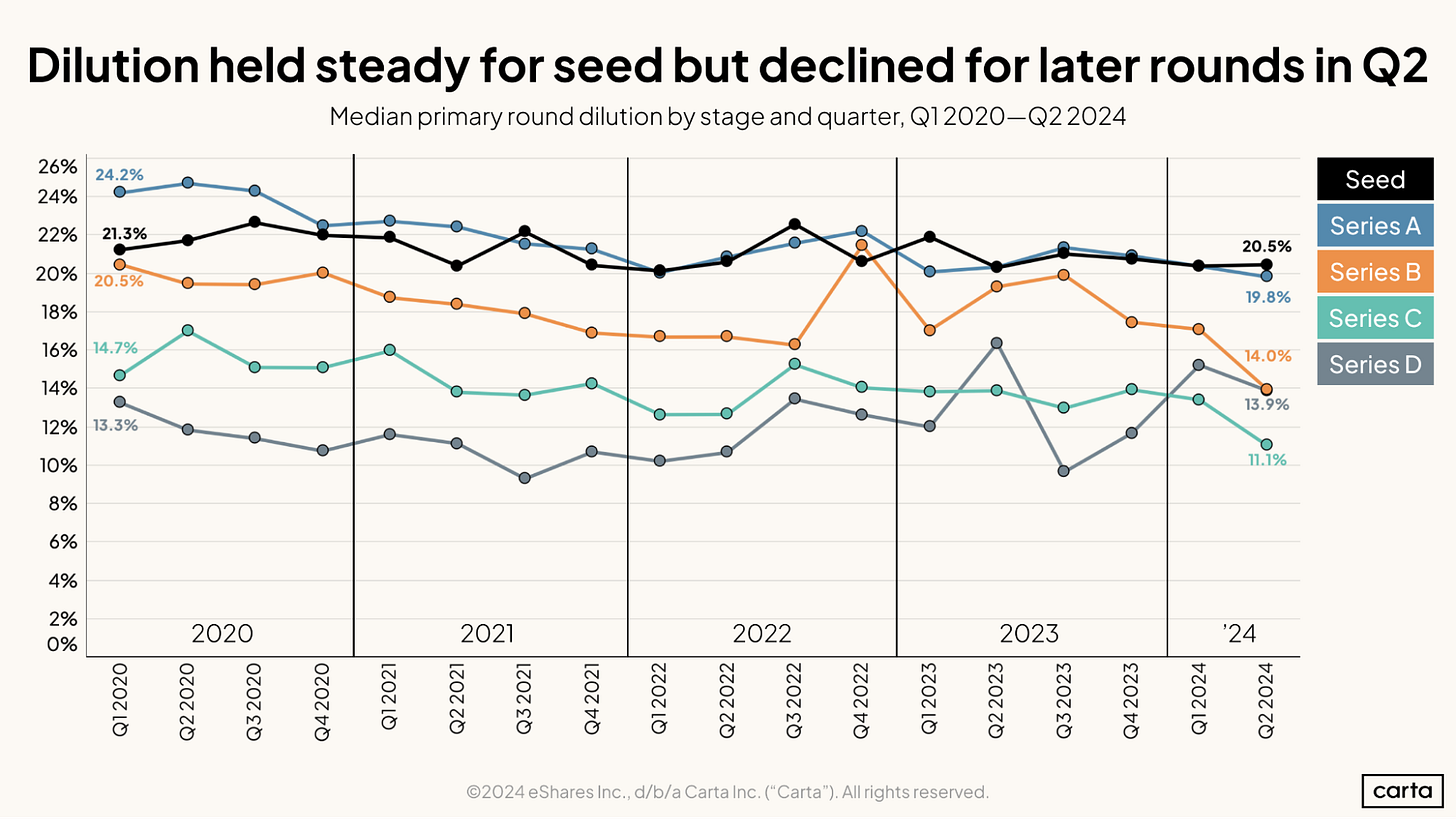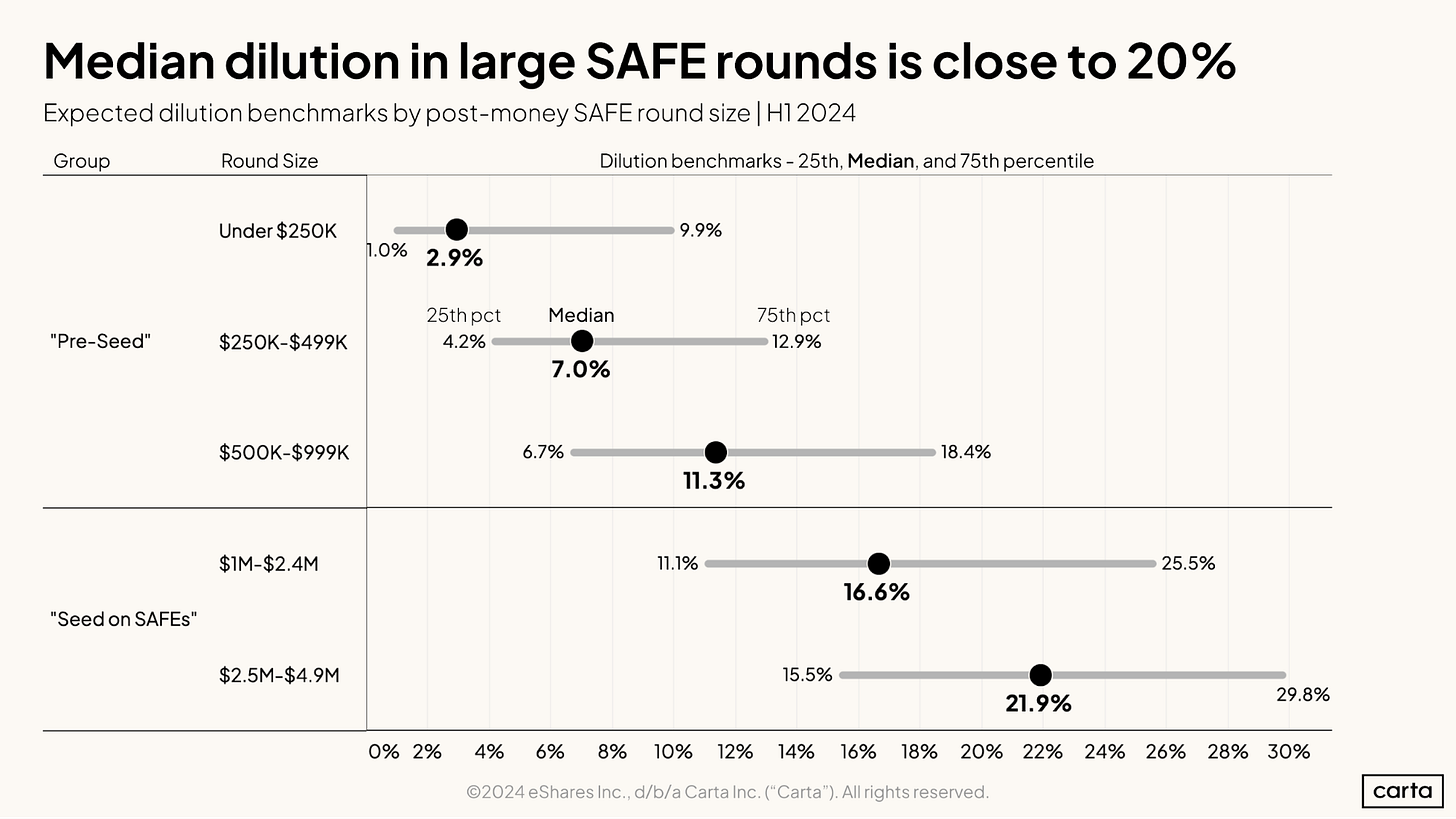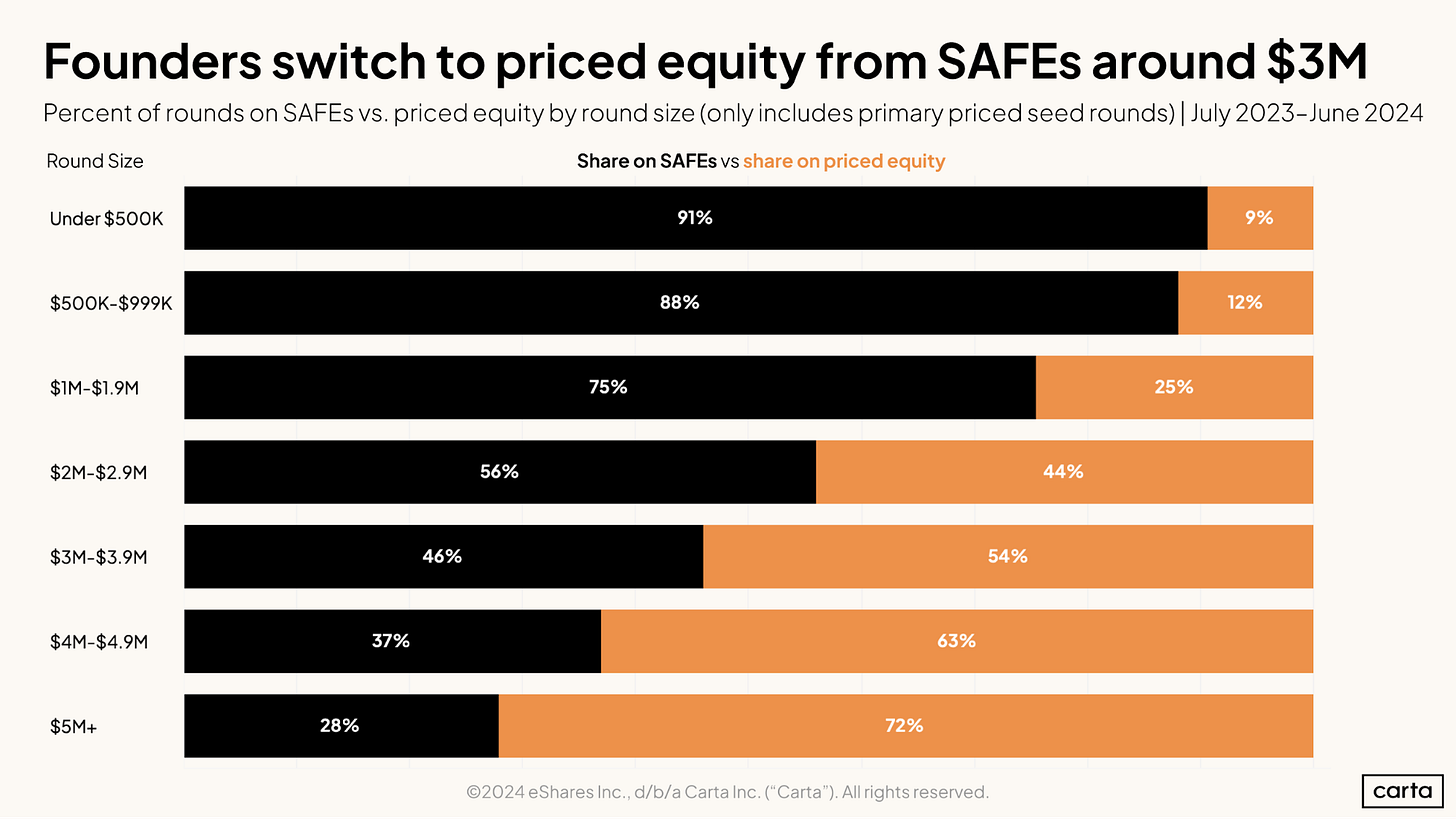The Founder's Toolkit #1: Starting Your Fundraising and Building Your Investor Pipeline
This is an in-depth guide to starting your fundraising process and building your investor pipeline. It includes a FREE Google Sheets CRM template for managing the process!
Hi, it’s Colin! Welcome to the 35 new subscribers who have joined Take Rate since the last post. I am excited to have you join the 2,700+ marketplace founders, operators, and investors who subscribe. If you like this content, please consider supporting me by becoming a paid subscriber! Join the fun! 👇
I'm excited to launch a new series called The Founder's Toolkit. In it, I'll share detailed examples, guides, and actual templates for different aspects of the fundraising and startup journey. These are all things I wish existed and that people had shared with me!
After helping raise over $200M across multiple companies from Seed to Series D, investing in 35+ companies, LPing multiple funds, raising a venture fund, and advising countless founders on their fundraising journeys, I've seen many fundraising scenarios. I’ve been on all sides of the table and seen what works and what doesn't.
The first post focuses on what every venture-backed founder must master: preparing for fundraising and building your investor pipeline. While this guide primarily applies to founders raising pre-seed through Series A rounds, the principles apply to later stages, too (though those rounds will require a deeper focus on metrics and financials).
Here is everything that is covered in the post (feel free to skip ahead):
Let’s get this process started!
Before You Start: Key Questions to Answer
Preparation is paramount when it comes to fundraising. Techstars has a great series called The Entrepreneur’s Toolkit, which covers this topic and many others (the name of my series is a nod to this and builds on their great content 🙏). The series describes the preparation process as mise en place, a culinary term for having everything in its place before starting. I love the visual of it.
I think of fundraising preparation like grocery shopping to build on the culinary theme. Everyone has had that moment when you show up at the grocery store without a list, hungry, and with no meal plan. Starting to fundraise without a plan and starved for cash is no different and will lead to sub-optimal outcomes.
Before diving into investor outreach, you need to answer some fundamental questions:
How much do I want to raise?
Your target raise amount should align with your runway and operational needs, market conditions, stage, and growth plans. Don't just pick a number - model it out. In modeling this out, assume it will take you longer and more money than you think. You don’t want to return to market fundraising months after closing and announcing your round.
What's your timeline?
What date do you need the money by? Working backward from this date is crucial for planning your process and requires a firm understanding of your net burn rate. Remember that fundraising takes longer than expected, and priced rounds take longer to close. For most founders, this means months, not weeks or days.
“Raise off momentum, not runway” -
of Euclid Ventures
When possible, you want to raise funds because of your traction, not your immediate cash balance. Raising from a place of strength (by building a great business) leads to superior fundraising outcomes.
What round should I be raising?
This question isn't just about calling it Pre-Seed vs Seed - it's about understanding where your company is in its journey. I often see founders trying to raise a Series A when they probably should be raising a seed extension (which is increasingly common with market valuations resetting lower). Your metrics, traction, and stage of product development should align with market expectations for each round. Know that market expectations are a moving target, and you should not assume the market is the same as the last time you went out to raise. Remember, round names are marketing - focus on the round that matches your company's current state and future milestones.
Who do you want on your cap table?
Not all money is equal. Think strategically about the type of investors who can add value beyond capital. Are you looking for founders, operators, domain experts, angels, funds, or strategic investors? It is essential to know how you want to sculpt your cap table. Do not reach out to every investor possible. Target the right ones.
"Spend more time closing believers than convincing skeptics." - Bruce Hamilton of Mech Ventures
You need to target investors who invest in the type of business you are building. For example, I am a marketplace investor, and almost daily, I get outreach from founders building CPG products, and I say no 100% of the time. It wastes everyone’s time indiscriminately reaching out to investors. Please don’t do it!
What valuation, terms, and dilution are you targeting?
Be realistic based on current market conditions. In my experience, most companies dilute between 10% and 30% in a given round, with an average closer to 20%.
Carta data supports my experience. The median Seed dilution is 20.5% and decreases over the later stages. For earlier funding stages, the reverse happens: Lower raise amounts typically lead to lower dilution, but for proper Seed rounds, it approaches 20%.
My basic rule for founders is to divide the amount they want to raise by 20% to imply a post-money valuation. For example, if you're going to raise $2M, this would mean a $10M post-money valuation.
Desired Raise Amount / 20% = Implied Post-Money Valuation
The next thing to determine is whether your company's traction and characteristics will support that valuation. If not, you need to lower the valuation, which increases dilution, or decrease the amount you raise. If yes, you can proceed with it as a baseline or even look to increase valuation, etc., if you can support a higher valuation. The trick is figuring out what the market is willing to value you at, which might be very different from what you think you are worth.
One approach to finding market terms is to talk to founders at the same stage who have just been in market fundraising and try to understand the valuations they were seeing or receiving. VCs can also give you this information, but know it’s in their best interest to guide lower. Also, see what competition raised and try to figure out the terms.
Funding terms are more art than science, and many factors have to be accounted for, like where your company is located, whether you are a repeat or exited founder, whether your company is in a hot sector, etc. For marketplaces, I have covered this in a past post for 2023 that I still think is highly relevant.
What type of round are you raising?
SAFE? Priced round? Convertible note? The round type has significant implications for your fundraising strategy. With priced rounds, you'll typically need to find a lead investor first who will set the terms and help you build momentum. With SAFEs, you have more flexibility to close investors on a rolling basis, though having a lead or “anchor” is still extremely helpful. SAFEs are increasingly common for earlier-stage rounds where it is inherently more challenging to set valuations and bridge rounds—the topic of round type warrants a dedicated post.
Typically, you wouldn’t want to do more than two SAFEs before doing a priced round. Stacking SAFEs can lead to unexpectedly high dilution for founders and the company. Generally speaking, Seed rounds are where priced rounds become the majority round type, and then the vast majority of rounds after Seed are priced.
Pro tip: If you are about to fundraise, you should have sent investor updates before starting your raise. If you haven't, start now. Nothing builds credibility like showing consistent communication and progress over time.
Running a Tight Process
One of the most common mistakes I see founders make is running an unfocused fundraising process that can last months. While it can work out, it is less than ideal.
“Time kills all deals” - Sales People
If you don’t run a tight process, you can run into the following issues:
It kills momentum: Investors lose interest when your process stretches too long. They start wondering why no one else has committed yet and whether they're missing something negative that other investors have spotted.
It drains your time: Fundraising is a full-time job that takes your focus away from running the business. The longer it drags on, the more your core business suffers - and ironically, this makes it even harder to raise.
Market conditions can shift: Founders have lost investors because they stretched their process into a market downturn. The funding environment can change rapidly, so you want to close while conditions are favorable.
You lose negotiating leverage: A drawn-out process suggests a lack of investor interest, which weakens your position in negotiations.
To run a tight process, you need:
Clear timeline with deadlines (hypothetical):
Week 1-3: Initial meetings
Week 4-5: Follow-ups and partner meetings
Week 6-7: Term sheet discussions
Week 8-10: Closing and paperwork
Parallel tracking of investors: Get multiple firms through your pipeline simultaneously so they reach decision points around the same time.
Regular communication cadence: Keep all interested parties updated on your process milestones and upcoming deadlines.
Consistent messaging: Your story, numbers, and terms should be consistent across all conversations.
Remember, FOMO is your friend, but you can't manufacture it with a scattered process. Investors will see right through false urgency. The key is to create natural competition through tight orchestration of your fundraising timeline.
Pro Tip: Even a tight process must be coupled with realistic expectations and fit what investors see as market valuations and traction. Without that, the best fundraising process will still fail.
Your Fundraising Launch Checklist
“Prior Planning Prevents Piss Poor Preformance” - The 7P’s from somewhere
Back to grocery shopping, a successful fundraising round requires preparation. You won’t enjoy that delicious meal without the proper ingredients, and you shouldn't start fundraising without having these materials ready:
Target Investor List: A well-researched list of investors who invest in your stage and sector with the correct check size.
CRM System: Whether you use a spreadsheet or dedicated software, you need a way to track people and interactions. Use the template below!
Deck:
Teaser deck - This deck should be shorter (10 slides), lighter on sensitive information, and leave the audience wanting more. It should also be easy to skim without a voiceover.
Meeting deck - Longer, typically includes an appendix, and is built to be narrated.
Tracking - I always recommend that founders use tracking tools like Docsend to see who is looking at the deck, who shared it, who looked at what, and for how long.
Forwardable Email Template: Make it easy for your champions to make introductions. Examples to come in another post.
Incorporation as a C-Corp: Most venture-backed startups are incorporated as Deleware C-corps, and investors look for this. However, this is changing, and more companies are incorporating in Nevada or Texas.
Financial Model: Show you understand your P&L, unit economics, and growth drivers. Typically, this would be up to a 3-year forecast/plan with an easy-to-see use of funds.
Cap Table: Clean and up-to-date record of all your investors and shareholders.
Data Room: Organized repository of key documents for due diligence, including many of the above. Examples to come in another post.
Optional:
Investment Memo - The memo should concisely outline your business, traction, and opportunity in your own words. Some investors love memos, some love decks and others love videos. I think you provide all of them, so you cover your bases.
Intro Video - Typically, founders record a Loom video walking prospective investors through their deck and introducing themselves and the company.
This post will focus on 1 and 2 and explain how to do them using a spreadsheet or CRM software.
Building Your Investor Pipeline
“Ask for money, get advice. Ask for advice, get money twice” - Pitbull
Your investor pipeline is more than just a list—it's a strategic tool you use repeatedly. You can also add to it between raises so you don’t start over again at each round. What is always true in fundraising is that relationships matter. The earlier you can build and cultivate relationships with future investors, the better.
Building rapport before you raise allows investors to get to know you and move faster when you raise a round. You want to avoid a cold start here, but you don’t need to map this out years in advance. Cultivate those relationships and track them!
Build an Effective Pipeline
Research Phase - Find relevant investors.
Use tools like Crunchbase, PitchBook, and LinkedIn.
Ask for recommendations from existing investors, advisors, and friendly founders.
Look at who invested in similar companies.
Tap into your network!
Check portfolio fit and potential conflicts.
Get creative!
Prioritization - Pick the right investors.
Tier your investors (1, 2, 3)
Consider the timing of their last fund
Identify relevant partners within each firm
Path to Intro - Get access to investors.
Map out who can introduce you to each investor.
Quality of intro matters - find strong connections with the following hierarchy:
Founders
Investors (existing)
Network
Investors (not invested)
Cold Outreach
Maximizing Introductions
“Your Network is Your Net Worth” - Porter Gale
As you progress in your introductions, you will find that certain people you meet, such as existing investors or advisors, are nodes that can open up large networks. Finding these super nodes is critical to building your pipeline. I often find that these super nodes are angel investors, advisors, or emerging managers who are very active in the startup ecosystem in some capacity.
Brian Nichols of Hustle Fund’s Angel Squad was the first to introduce me to the importance of angel investors to early-stage founders who are fundraising.
“The people who write the $1k, $2k check are the most helpful at supporting the founder[s]” - Brian Nichols
I previously wrote about this phenomenon, and I think the following excerpt sums it up nicely:
“Taking smaller checks from angel investors often leads to introductions to other investors, resulting in a multiplicative effect, or the "money multiplier." These angel investors often work in the tech industry and are keen to help startups grow. Steven Fitzsimmons of Freshpaint perfectly visualizes this point.”
The success of your pipeline depends on finding the correct targets and getting access to them. Relationships are everything in fundraising; invest in them early and often and keep nurturing them.
Pro Tip: When tiering your investors and starting to pitch, it is essential to practice on “friendlies” and lower-tier investors first. You want to sharpen the knife before shooting your shot with your tier 1 investors.
Managing Your Process: The CRM
You must manage your process once you have your pipeline set and your introductions flowing. Everyone has a different way of doing this, but time and time again, I see that founders who are successful with fundraising use a CRM. The type of CRM is less important than just doing it. So, let’s get into how to do it.
Option 1: The Google Sheets Approach
The most common way to do this is to use a Google Sheet because it is free and easily shareable. I have also seen founders successfully use Notion and Airtable. To help founders shortcut this, I have shared a free battle-tested Google Sheet template that I have used with many founders to raise tens of millions in venture capital (hopefully hundreds of millions soon!).
The template has instructions provided on the “Start Here” tab. The template is view-only, so please create your copy and customize it!
Pro Tip: If you use a Google Sheet, your investor pipeline will be shareable with your network. Leverage this by sharing it with your existing investors, advisors, friends, and friendly founders and asking who they can introduce you to on your list. You can also ask people who might be missing from the list.
Option 2: Using a CRM Software
CRM software is the most sophisticated approach; it has a lot of benefits and an initial ramp-up time. The nice part about investing in software for your investor pipeline/CRM is that you can build, customize, and use it for multiple rounds. I would recommend this approach for founders who have used CRMs in the past and won’t spend just as much time setting it up as they do using it. The downside is that you must pay for them, although most have a free tier.
Below is a list of common CRM software that founders use. I have obtained discount codes from the companies where possible!
Top 5 CRMs for Startup Fundraising
If there are others that I have missed, please share them in the comments.
I use Folk for all my fundraising for Yonder and can share a bit about how I set it up and what features I use.
I tested out a bunch of CRMs, and ultimately, I just wanted something simple that integrated with Gmail and LinkedIn. Folk was a fit, with Attio as a close second. The features I use daily are below:
Chrome Extension (I can’t live without this now)
Auto-capture LinkedIn profiles
Track email interactions
Quick note-taking
Pipeline Management
Custom fields for round tracking
Automated follow-up reminders
Email Integration
Outreach template management
Emails to lists of investors for outreach and updates
Open and response tracking
The other nice part about Folk is that they already have pre-built templates for fundraising and emails, which you can find here. Lots of the other CRMs are free to start and have the same features and templates, but I found the free tier to be generous on Folk, and the cost was ultimately low (~$200/year).
Choosing Your System
Using a spreadsheet or CRM software depends on your CRM experience, fundraising scale, and team size. I've seen founders successfully close rounds using both. A well-organized spreadsheet might be all you need to run a focused Seed process with 40-50 target investors. However, a CRM's automation and collaboration features can save you significant time if you're talking to 100+ investors or have multiple team members involved in the fundraising process.
The key isn't which tool you use - it's how consistently you use it. Choose a system you'll maintain and stick to. I've seen founders with fancy CRM setups fail because they didn't log their interactions, and others close major rounds using nothing but a simple Google Sheet they updated religiously. Your CRM should help you stay organized and focused, not become another task you must manage.
What's Next?
Now, start your fundraising process!
Remember that running an effective fundraising process is an art, a science, and a means to an end. The goal isn't just to raise money—it's to find the right partners to help you build a successful, self-sustaining business.
In the upcoming posts in our Founder's Toolkit series, we'll explore compelling pitch decks, forwardable emails, data rooms, investor updates, and more. Be sure to subscribe to get them!
Let me know in the comments what specific aspects of fundraising you'd like me to cover in future posts. If you find this helpful, consider sharing it with other founders who might benefit from it. 🙏
Thanks for reading!
As always, please email me at colin@yonder.vc with any comments and feedback. If you need help setting up a fundraising process, I work with a few companies every month, typically on a referral basis. Please reach out to see my availability.
Please don’t forget to subscribe and follow me on X and LinkedIn for other great marketplace content. If you want to book a call, you can find me on Intro. If you like this content, please consider supporting me by becoming a paid subscriber!
About Me:
Colin is a marketplace geek and the General Partner of Yonder, a pre-seed marketplace fund that invests in marketplaces that create new economies. He has also been a long-time advisor to marketplaces, helping them with product growth, monetization, liquidity optimization, and strategy. Previously, he was the CPO/CRO at Outdoorsy and worked at Tripping.com, Ancestry.com, Justanswer, and the Federal Reserve.











Great read! I’m bootstrapping for now but when that changes I’ll be following this to a T! Keep it coming 👏
Really well done Colin. I appreciate your thoroughness and the clarity you provide for how to raise successfully.